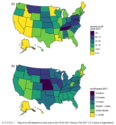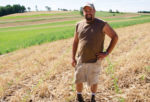Advertise Follow Us
No-Till Farming 101
No-Till Farmer Influencers & Innovators
[Podcast] Dean Fehl on Strip-Till Yesterday and Today
For this episode of the No-Till Farmer Influencers & Innovators podcast, brought to you by Verdesian Life Sciences, Frank Lessiter speaks with early strip-till adapter Dean Fehl about how he got started strip tilling, and his current role as a retiree helping his sons work the family farm, and more.
Read More
Welcoming Wildlife with No-Till
Usually touted for its soil health benefits and how it reduces erosion and improves workload, no-till is helping this Wisconsin dairy operation have a positive effect on the local kestrel population as well.
Read More
Congress Hears About No-Till in First Testimony
Frank Lessiter’s 1973 speech is considered the earliest congressional testimony on no-tillage.
Read More
No-Till Innovation Comes in Leaps and Bounds
Wisconsin no-till dairyman Chris Conley thwarts heavy rain and hills with no-till, covers and planting green.
Read More













